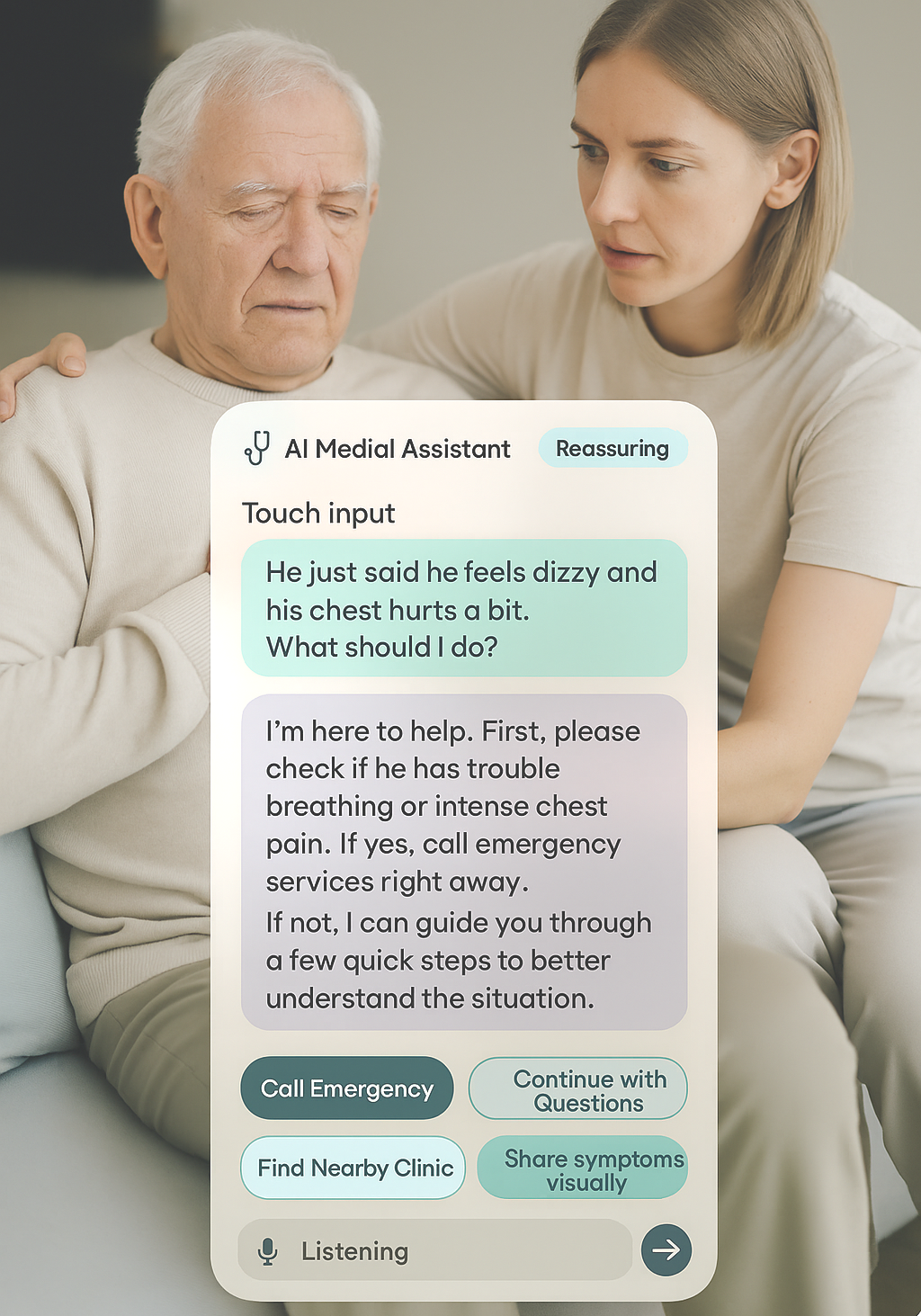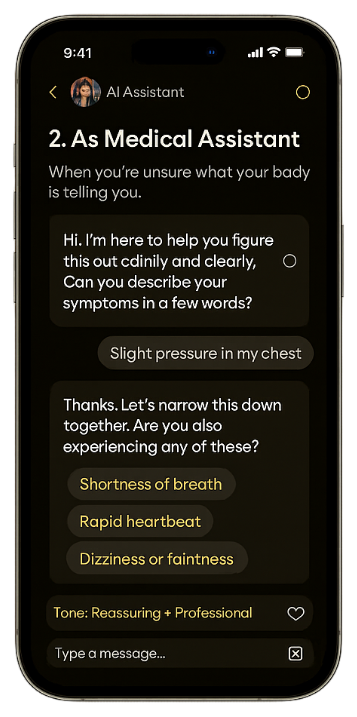Designing with AI Models
This project explores how AI model behavior can be designed, guided, and improved. It highlights empathetic interactions and practical use cases across health, accessibility, and everyday support.
What Model Behavior Means to Me
To me, model behavior is about more than just effective responses — it's about meaningful, human-centered interaction. I believe well-designed model behavior can have a profound, positive impact, especially for people who may feel marginalized, isolated, or overwhelmed. Even small exchanges can be life-changing when they’re grounded in empathy and tailored to a person’s specific needs.
Whether offering calm support in a stressful moment, helping untangle a difficult task, or simply being there when no one else is, a well-trained model can step in as a helpful companion — like a social worker, therapist, or medical advisor when other resources aren’t accessible. By understanding nuance and reducing complexity, model behavior has the power to clear space in people’s lives — and to make that space feel a little more safe, inclusive, and humane.
How can AI models show empathy, reduce friction, and support people in critical moments? This exploration looks at interface concepts for guiding model behavior with clarity and care.
Use Cases
-

1. In a stressful moment
Example: In the context of grief.
The model listens, detects signs of distress, and gently adjusts its tone to become more empathetic — using slower pacing, softer wording, and validating feedback.
This adaptive response helps create emotional space before the user replies — by voice, text, or tone sliders.This clip illustrates the emotional entry point for many users: a moment of overwhelm, confusion, or grief.
Here, the user isn’t navigating an interface — she’s navigating emotion. -

2. As a medical assistant
When navigating a health emergency.
In this moment, a caregiver supports an elderly person, unsure how to proceed with a sudden health concern. She turns to her AI assistant for immediate, calm guidance. Without replacing medical professionals, the model helps her assess symptoms, identify potential urgency, and suggests next steps — whether it's finding the nearest open clinic or offering care instructions.
The assistant adapts to her level of medical knowledge, using clear and respectful language. Tone is automatically set to reassuring and precise, but can be adjusted with simple inputs. In critical moments, it shortens responses to avoid overwhelm and provides visual or spoken step-by-step instructions if needed.
For many caregivers and individuals in remote areas or under pressure, this kind of grounded, accessible help can make a crucial difference — sometimes life-saving.
-

3. For marginalized or isolated users
For neurodiverse users.
This concept explores how AI models can provide inclusive, emotionally intelligent support through tone calibration, intention tagging, and guided feedback. The interaction features Muse, the assistive art guide from the Show Art museum app, engaged in a conversation about an upcoming event.
Here, Muse helps a user who may be feeling unsure or socially isolated by offering creative, encouraging suggestions — not just answers. Through thoughtful phrasing, adaptive tone, and respectful curiosity, the assistant becomes more than a tool—it acts as a companion that supports confidence, decision-making, and emotional well-being.
Use Case 1: Stress & Emotional Support
The AI assistant, embedded in a calming interface, catches tone and stress-related keywords from her voice or written input and adapts instantly. The response changes in emotional temperature: less formal, more affirming, with simpler sentence structure and empathetic phrasing.
By using voice or choosing from tone presets like “empathetic,” “neutral,” or “motivating,” the user can co-steer the conversation with minimal effort.
Start page with choosable visuals
An AI assistant helps calm a user through empathetic tone recognition and quick tone adjustments.
An optional tone-setting feature enables users to quickly guide the assistant’s behavior—especially helpful in sensitive moments.
Use Case 2: Assistive Medical Guidance
This type of interface helps non-professionals make confident decisions in moments of uncertainty without overwhelming them. It doesn’t replace a doctor — but it bridges the gap until help is available.
Helping others
A caregiver is holding a phone while staying close to an elderly person sitting or lying nearby. The screen shows a calming interface with soft, accessible colors and large touch targets.
When you're unsure what your body is telling you
Late at night. Someone feels strange chest pressure but isn't sure what to do.
Use Case 3: For marginalized or isolated users
A concept UI for shaping AI behavior through guided feedback, tone calibration, and intention tagging.
Muse - Assistive Art Guide from the Museum App “Show Art” in usage.
Example: A conversation about an upcoming event.
The assistent is coming up with creative ideas to help the user with uncertainty.

